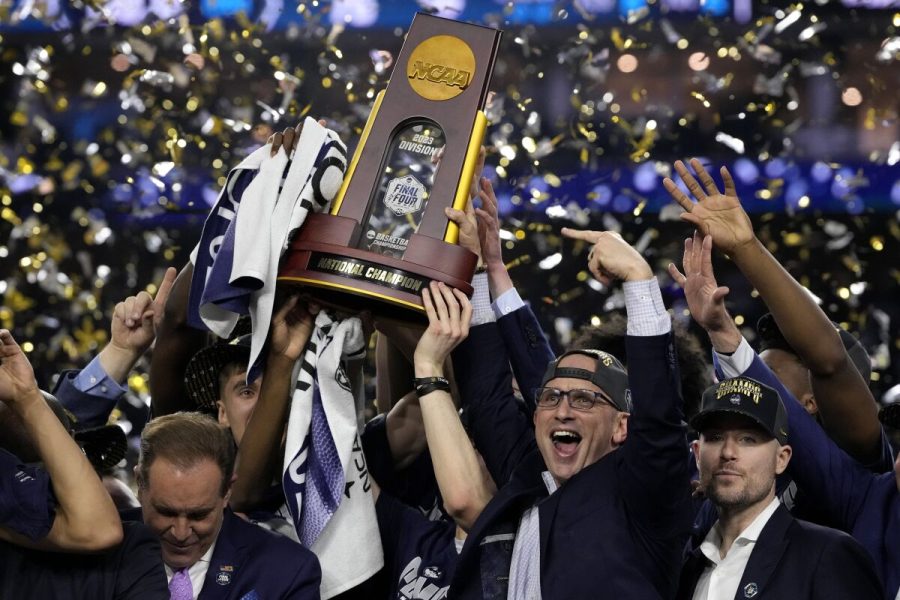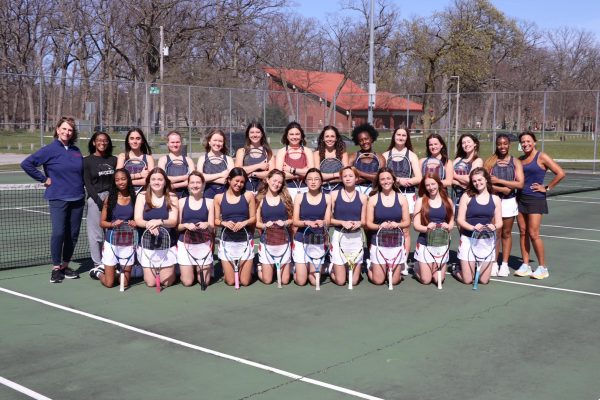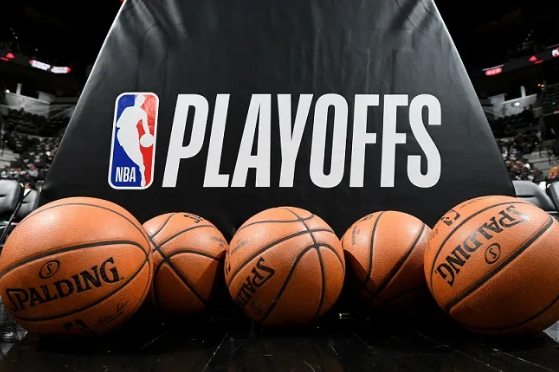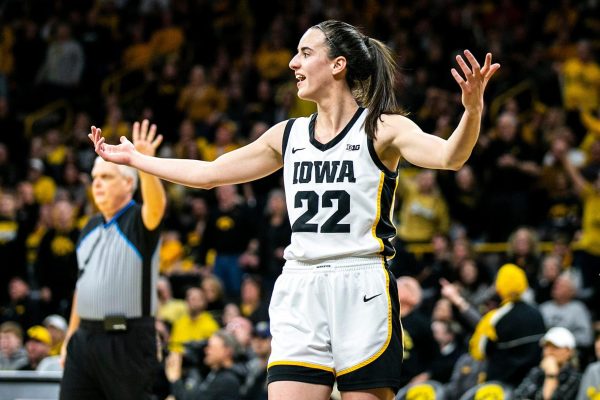One Shining Month: The Beauty in March Madness
April 14, 2023
The NCAA Division 1 basketball tournaments have recently come to an end, with the UConn Huskies winning the men’s bracket, and the LSU Tigers winning the women’s. From March 15th to April 2nd, sixty-four teams from all over the nation competed in a single-elimination style tournament that has been around since 1939. For both the men’s and women’s tournaments, this year was one of the most unpredictable and jaw-dropping tournaments in history. With all these teams’ seasons on the line, there is no wonder why the NCAA basketball tournament has been nicknamed “March Madness”. And with all the upsets and the last-second shots, and the double overtimes and the three-point daggers, one can only smile at the end of it all, because while the nets have to come down eventually, we’ve watched another year of one the most entertaining tournaments sports has to offer.
In 1979, the method of seeding was first introduced into the NCAA tournament. From then on, each team that entered the tournament would be seeded based on their regular season or conference tournament success. This decision in 1979 rewarded the best teams in the country for their success in the regular season, as the best teams became known as the one seeds, and the worst teams would be known as the 10 seeds (now the 16 seeds). By rewarding these higher-ranked teams based on their regular season, they would match up against the higher seeds, giving them a better chance of moving on to the next round. Well…….maybe not. Because of seeding, upsets have been one the most captivating parts of March Madness. In the very first tournament in which it was used, 10th-seeded St. Johns beat 2nd-seeded Duke, and 9th-seeded Penn beat 1st-seeded North Carolina. These two underdogs would face off in the quarter-finals, with Penn prevailing, and losing to the eventual national champions Michigan State in the semi-final.
Since 1979, these upsets have multiplied. In the present day, there are sixty-four teams seeded one through sixteen. In this year’s men’s final four, there were no teams ranked lower than fourth, there were only two number-one overall teams in the sweet sixteen, and for the second time in history, a sixteen seed beat a one seed in the first round of the tournament. While no one would have thought that sixteen-seeded Fairleigh Dickinson would’ve upset Purdue at the start of the tournament, when it comes to predictions and bracket-making, there are just some games that catch your eye. Because of the addition of seeding, teams such as Wichita State, Florida Gulf Coast, and Saint Peter’s have become automatic picks to be upset teams in March Madness. Unlikely heroes such as Steve Nash for Santa Clara and Stephen Curry for Davidson have seen their lives change before their eyes because of memorable upsets in March Madness, which have helped lead them to amazing careers in the NBA. Some of these games leave players and fans heartbroken, but for those not in that tiny percentile, this is what makes March Madness well, MARCH MADNESS.
While upsets and buzzer-beaters have been part of the men’s game for ages, the women’s tournament has tended to follow the seeding much closer. Women’s basketball has been dominated by the same teams for years at a time. Connecticut, South Carolina, Tennessee, and Notre Dame have all had long runs as the best teams in women’s college basketball. This predictability in the women’s tournament is one of the reasons why the games tend to have much less viewership than the men’s. However, with a more electric women’s tournament than ever before, and a deal with ESPN that has brought much more attention, things have changed. One reason for this change, Caitlin Clark. The Iowa Hawkeyes’ star point guard has brought attention from all over the nation, and has significantly helped boost the popularity of women’s basketball just by her junior year. From just this year’s March Madness, Clark is the only player in the history of the women’s tournament to score forty points in back-to-back games, as well as breaking the record for the most amount of threes in a championship game (8), getting the first thirty or forty point triple-double in tournament history, and scoring the most points in semi-final history (41). Besides the never before seen talent in Caitlin Clark, players such as Angel Reese, Georgia Amoore, and Hailey Van Lith delivered amazing performances in the tournament as well. Standout individual performances, turned-up trash talk, and the early exit of two number-one seeds have shown that the women’s tournament is just as entertaining as the men’s, and that the record-breaking 10 million people that watched the championship game will likely be tuning in next year too.
While the excitement of an upset or a last-second shot is unmatched, there are so many layers to the NCAA basketball tournament. While professional sports are more popular, college athletes and the sports that they play possess a unique energy that is often lost in the pro game. The fire in college athletes is what makes for so many amazing moments that we see every year in March Madness. Another layer of the tournament can be seen outside of just the players as well. College coaches hold a responsibility to not only coach but to mentor the young adults that they coach. The commitment to making a great team is important, however, coaches such as Duke’s legendary Coach K, and South Carolina’s Dawn Staley have brought the expectation for coaches in college sports up to a level in which they have a greater impact on the lives of the players that they coach. The passion of the players and the commitment from the coaches is just one of the many things that shows the beauty in college basketball, and the NCAA tournament displays this more than any other time of the year. For this very reason, while their coaching is no longer seen on the side of the court, the presence of coaches like Jim Valvano and Pat Summitt has never left the court. March Madness is most of all important to the players who get the privilege to play in it, but it is also important to so many other people for so many different reasons, Whether the beauty of the tournament is seen in a 103-year-old chaplain, or in the final sign off of a legendary voice, March Madness will continue to dazzle crowds for years to come. From when the ball is tipped, to when that moments gone, you can always count on March for one shining moment.













